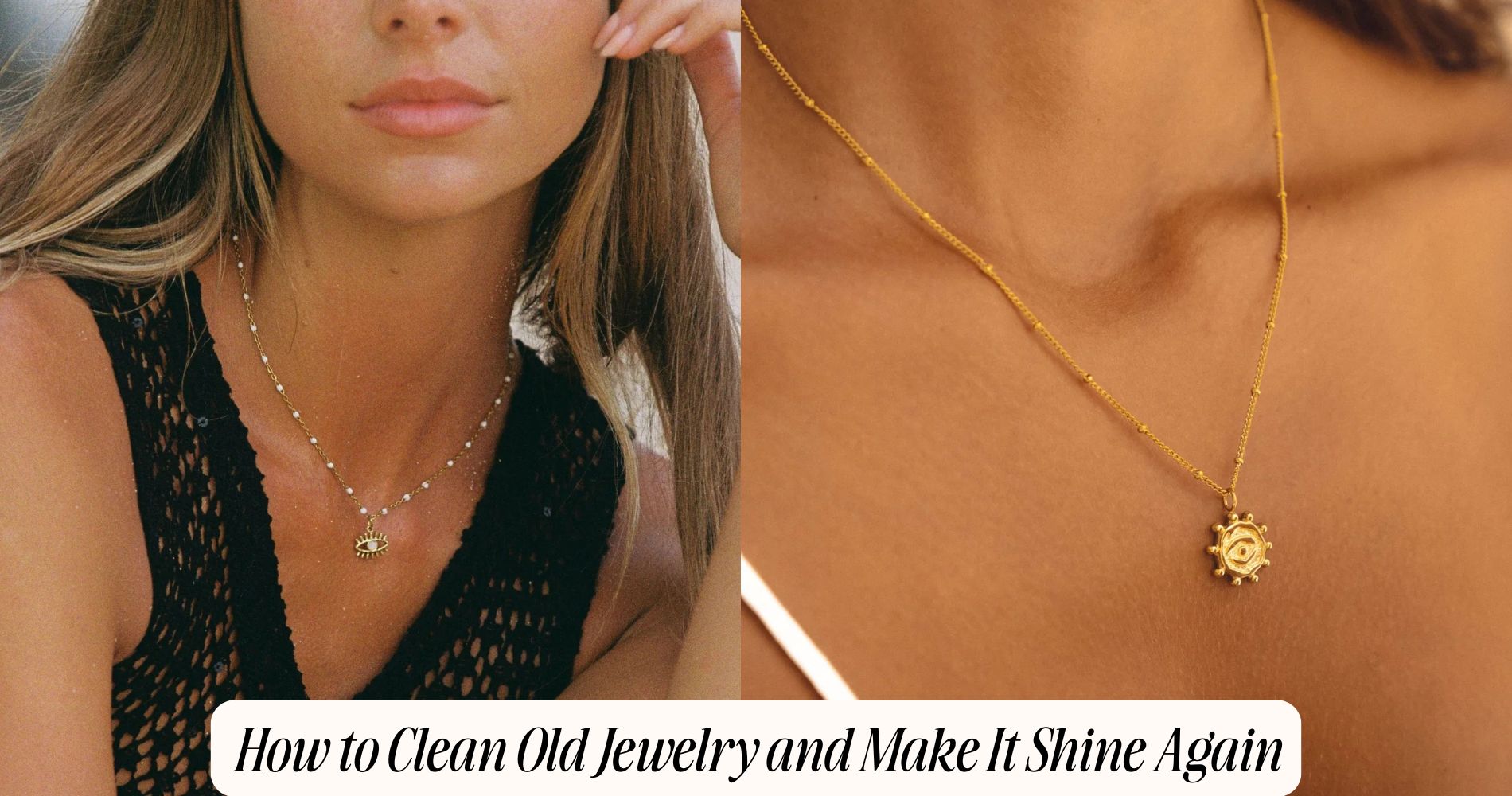
How to Clean Old Jewelry and Make It Shine Again
Wondering how to clean old jewelry without damaging it? Start by identifying the metal and gemstones so you can choose the safest cleaning method. Use soft brushes, lint-free cloths, and pH-neutral soap with warm distilled water—never harsh chemicals. Soak gold briefly, gently clean silver with a baking soda paste, and use only a damp cloth for delicate stones like pearls or opals. Rinse thoroughly, dry completely, and store each piece separately. With the right care, you can bring back the shine—and if you want pieces that stay radiant longer, check out our anti-tarnish jewelry. Up next: cleaning tips tailored to specific types of jewelry.
Understanding the Materials in Your Jewelry
Before you begin cleaning old jewelry, you need to identify the materials in each piece, as different metals and gemstones require specific care.
Start by inspecting the metal composition—look for stamps or hallmarks indicating gold, silver, platinum, or base metals. Each metal reacts differently to cleaning agents; for instance, silver tarnishes, while gold may scratch if handled improperly.
Next, assess the gemstone types present. Examine clarity, color, and setting for clues about whether you’re dealing with diamonds, sapphires, pearls, or softer stones like opals and turquoise.
Some gemstones are porous or sensitive to moisture and heat. Accurate identification lets you select the safest cleaning technique and avoid irreversible damage.
Document your findings for reference before moving on to the cleaning process itself.
Gathering the Right Cleaning Supplies
Once you've identified the specific metals and gemstones in your jewelry, select cleaning supplies tailored to those materials. For cleaning jewelry at home, gather lint-free microfiber cloths, soft-bristled brushes, and non-abrasive cleaning solutions—avoid harsh chemicals that can damage delicate pieces. Distilled water is preferable to tap water, as it prevents mineral deposits.
When choosing jewelry cleaning kits, opt for those labeled safe for your jewelry’s particular metals and stones; check for pH-neutral formulas and soft tools. You’ll also need small containers for soaking and a magnifying glass to inspect settings and crevices.
Never use household cleaners or abrasive pads, as they can scratch or pit surfaces. With precise supplies ready, you’ll protect your jewelry’s integrity and prepare for effective, safe cleaning.
Safe Cleaning Methods for Gold Jewelry
Although gold is a resilient metal, it requires specific cleaning techniques to preserve its luster and prevent damage. Begin by filling a small bowl with warm water and a few drops of mild dish soap. Avoid harsh chemicals or abrasive cleaners, as they can erode gold’s surface and compromise cleaning safety.
Gently agitate your gold jewelry in the soapy solution for about 15 minutes. Use a soft-bristled brush—like a baby toothbrush—to reach intricate areas, ensuring you don’t scratch the metal.
Rinse each piece thoroughly under lukewarm running water, then pat dry with a lint-free cloth. For ongoing jewelry maintenance, store gold pieces separately in soft pouches to minimize scratching.
Regular, gentle cleaning will keep your gold jewelry brilliant without risking its integrity.
Restoring the Shine to Silver Pieces
Caring for silver jewelry demands a different approach than gold, as silver’s surface tarnishes easily when exposed to air and moisture. To restore its shine, begin by preparing a solution of warm water and mild dish soap. Soak your silver pieces for five minutes, then use a soft-bristle toothbrush to gently scrub crevices.
For effective oxidation removal, create a paste with three parts baking soda to one part water, applying it with a soft cloth in gentle, circular motions. Rinse thoroughly and dry with a microfiber cloth.
For advanced tarnish prevention, store silver in anti-tarnish pouches or wrap it in acid-free tissue. Avoid harsh chemicals or abrasive materials, as these can scratch or further oxidize your jewelry, compromising its luster.
Caring for Gemstones and Delicate Settings
Because gemstones and delicate settings vary widely in composition and durability, you’ll need to tailor your cleaning approach to each piece. Always check the specific gemstone care requirements before cleaning.
Soft gems like opals and pearls demand gentle handling—wipe them with a damp, lint-free cloth, avoiding harsh chemicals or ultrasonic cleaners.
For harder stones, use a soft brush and mild soap, ensuring you rinse thoroughly and dry immediately.
Examine prongs and settings with a magnifier to detect looseness or debris.
Avoid prolonged soaking, as moisture can weaken adhesives or damage porous stones.
Proper jewelry storage is essential—keep items separated in soft pouches or lined compartments to prevent scratches.
Store pieces away from direct sunlight and heat to preserve both gemstone brilliance and structural integrity.
Homemade Cleaning Solutions for Vintage Jewelry
When cleaning vintage jewelry at home, select ingredients that remove grime without damaging fragile metals or stones. For effective DIY solutions, mix a few drops of mild dish soap with warm distilled water. Use a soft-bristled toothbrush to gently work the solution into crevices.
Avoid harsh chemicals, baking soda, or vinegar, as these can scratch or corrode antique finishes.
Rinse your jewelry under lukewarm distilled water to eliminate any soap residue. Pat dry with a lint-free cloth, ensuring you don’t snag delicate prongs or settings.
For extra shine, polish gently with a jewelry polishing cloth specifically designed for cleaning jewelry.
Always test your DIY solutions on a small, inconspicuous area first to confirm compatibility with vintage materials and preserve the piece’s integrity.
Tips for Cleaning Costume and Plated Jewelry
While homemade solutions work well for vintage jewelry, costume and plated pieces require extra caution due to their delicate coatings and base metals. Always check if your jewelry has thin plating or is made from sensitive metal alloys, as harsh chemicals or vigorous scrubbing can strip finishes or cause corrosion.
Use a soft, damp cloth and mild soap—never soak costume jewelry, since moisture can loosen adhesives and degrade plating thickness. Work gently around settings and avoid abrasive brushes that scratch surface layers.
If your piece features glued stones, keep water away from the settings. For stubborn grime, use a cotton swab lightly dampened with soapy water. Rinse carefully with a clean, barely wet cloth, ensuring you don’t expose the jewelry to excess moisture.
Drying and Polishing Techniques for a Brilliant Finish
After cleaning your jewelry, make certain every piece dries thoroughly to prevent moisture from tarnishing metals or weakening adhesives. Use a lint-free microfiber cloth to pat each item dry, ensuring you reach crevices and settings where water can hide.
For intricate designs, employ compressed air or a soft brush to remove residual moisture.
Once dry, implement polishing techniques tailored to the metal type. For gold and silver, gently buff with a designated polishing cloth in small circular motions, enhancing luster without scratching.
Avoid over-polishing plated pieces to preserve their finish. For gemstones, use a soft, dry cloth, steering clear of abrasive materials.
These drying methods and precise polishing techniques restore brilliance, highlighting your jewelry’s craftsmanship while maintaining material integrity.
Storing Your Jewelry to Prevent Future Tarnish
Because improper storage accelerates tarnish and damage, select storage solutions that control humidity and limit exposure to air. Use airtight containers such as zip-lock bags or specialized jewelry boxes with anti-tarnish linings.
For ideal tarnish prevention, place silica gel packets or anti-tarnish strips inside containers to absorb excess moisture. Store silver pieces separately to avoid chemical reactions that can cause tarnishing.
Never store jewelry in direct sunlight or in humid environments like bathrooms.
Implement storage tips such as wrapping delicate pieces in a soft, lint-free cloth to prevent scratches and further oxidation. Keep gold and gemstone jewelry away from harsh cleaning agents and rubber, which can degrade metals.
Regularly inspect stored items to ensure conditions remain dry and clean, safeguarding your jewelry’s shine and structural integrity.
Frequently Asked Questions
Can Ultrasonic Cleaners Be Used for All Types of Jewelry?
You can't use ultrasonic cleaners for all jewelry types. Prioritize ultrasonic cleaning safety by checking jewelry material compatibility. Avoid cleaning porous stones, pearls, or glued items. Always consult manufacturer guidelines and inspect settings before ultrasonic cleaning to prevent damage.
How Can I Identify if My Jewelry Is a Valuable Antique?
To assess antique value, inspect your jewelry for hallmark identification—look for maker’s marks, purity stamps, and period-specific engravings. Compare these marks with reference guides. Evaluate craftsmanship, materials, and signs of hand-finishing to confirm authenticity and age.
Is It Safe to Wear Freshly Cleaned Jewelry Immediately?
Yes, you can wear freshly cleaned jewelry immediately if you've rinsed all cleaning agents thoroughly. Prioritize safety precautions—ensure no residue remains, especially with porous stones or delicate metals, to prevent skin irritation or damage to the piece.
What Should I Do if My Jewelry Smells After Cleaning?
If your jewelry smells after cleaning, you should rinse it thoroughly with distilled water, then dry it completely. For effective fragrance removal and odor elimination, use a soft brush with mild soap, ensuring all residue is removed from crevices.
How Do I Clean Jewelry With Glued-In Stones?
When cleaning jewelry with glued in stones, avoid soaking. Use gentle cleaning methods: dampen a soft cloth with mild soapy water, carefully wipe the surface, and dry immediately. Don’t immerse, as moisture can loosen the adhesive.
Conclusion
By understanding your jewelry’s materials and using precise cleaning techniques, you’ll restore luster without risking damage. Always choose the right supplies and methods for gold, silver, gemstones, or costume pieces. Homemade solutions can be effective, but test them first on inconspicuous areas. After cleaning, dry and polish each piece thoroughly for maximum shine. Store jewelry in anti-tarnish containers or pouches to keep it brilliant longer. With careful attention, your cherished pieces will sparkle for years to come.














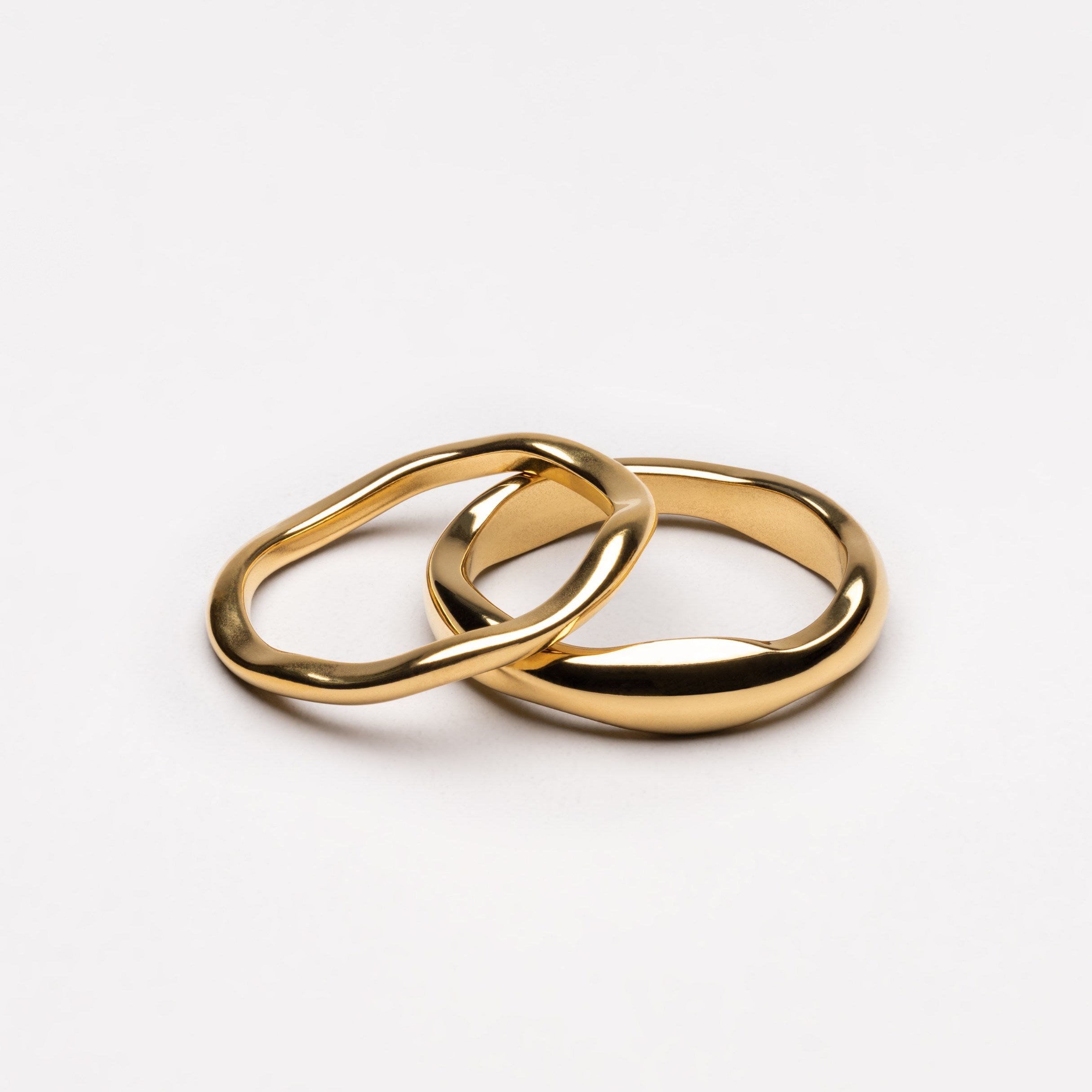
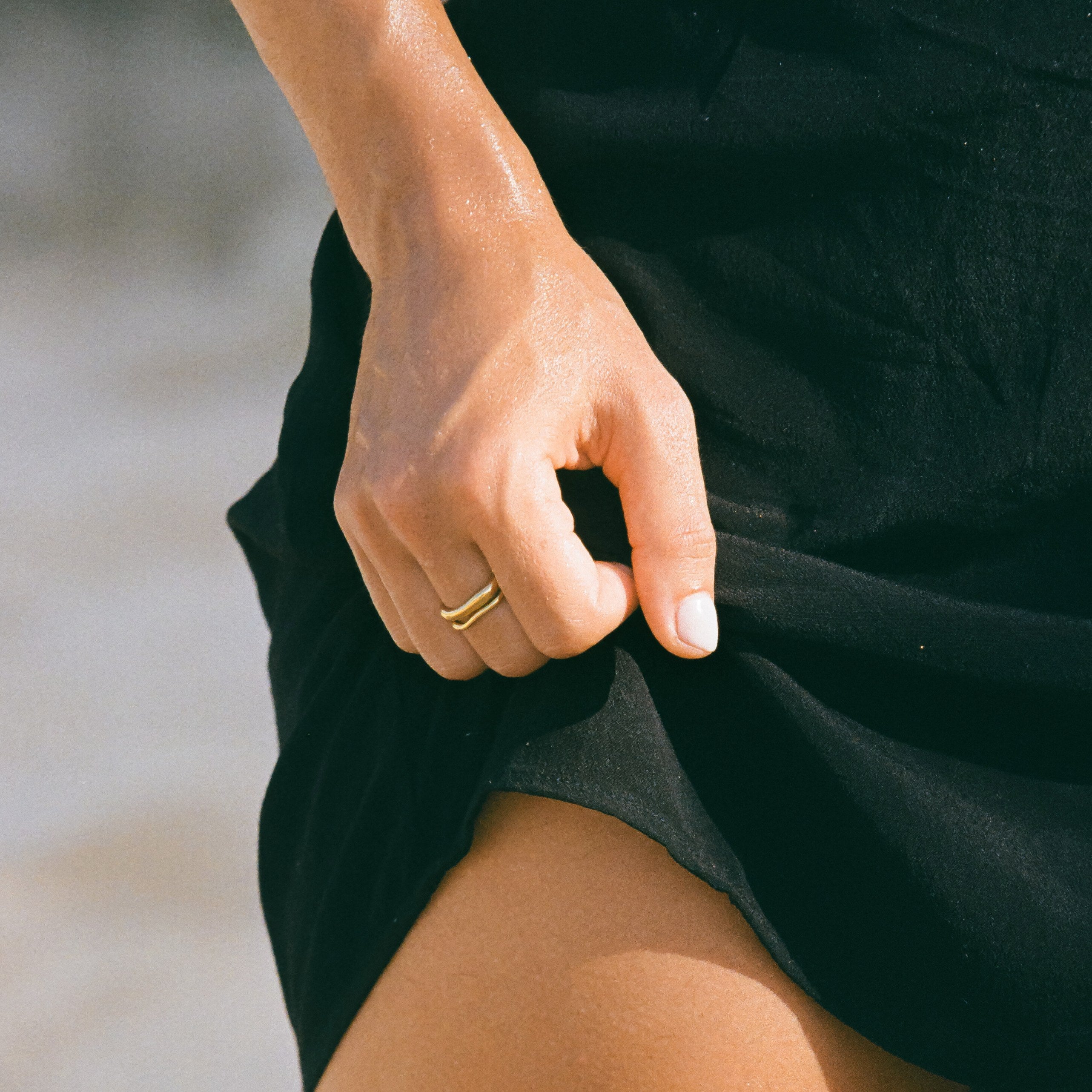

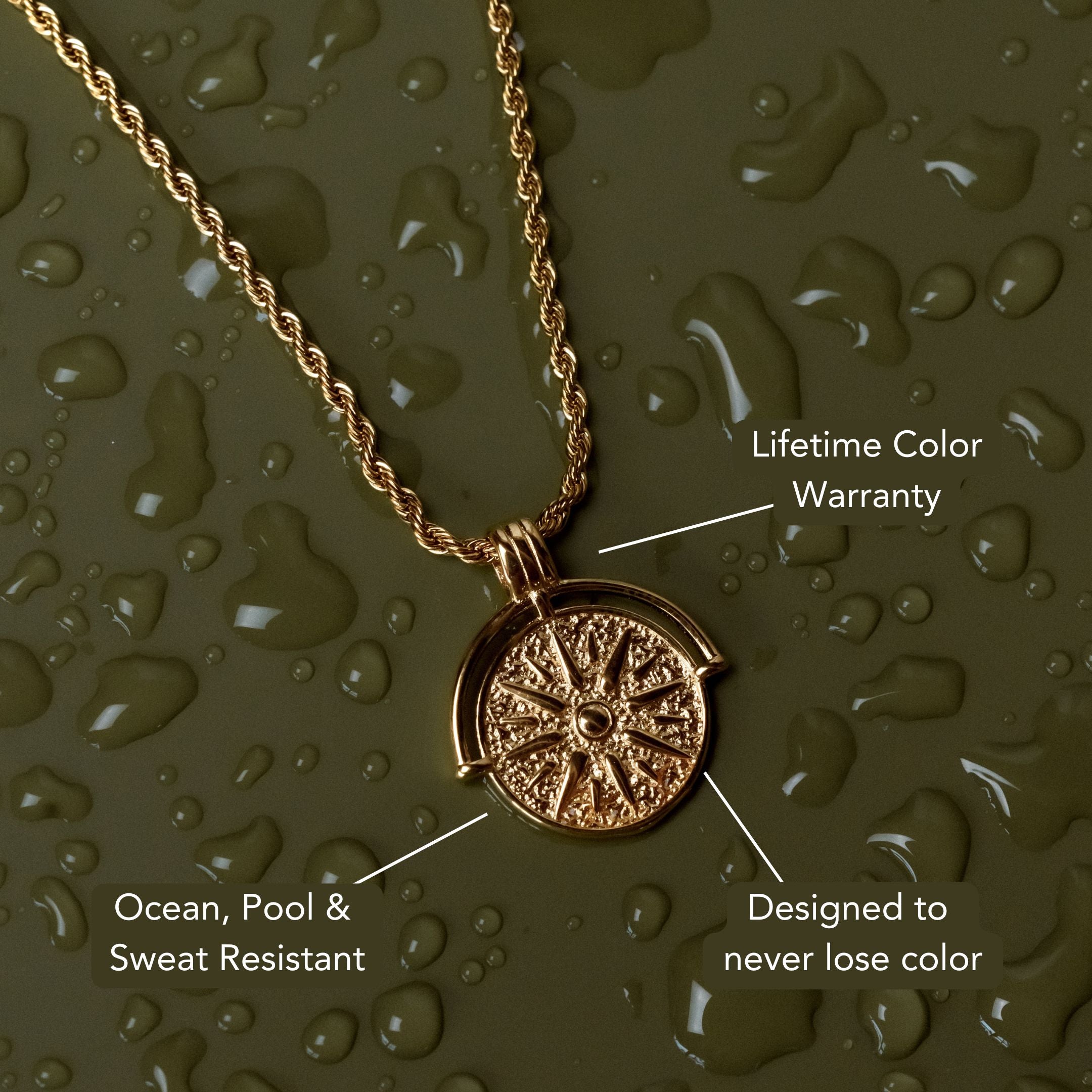

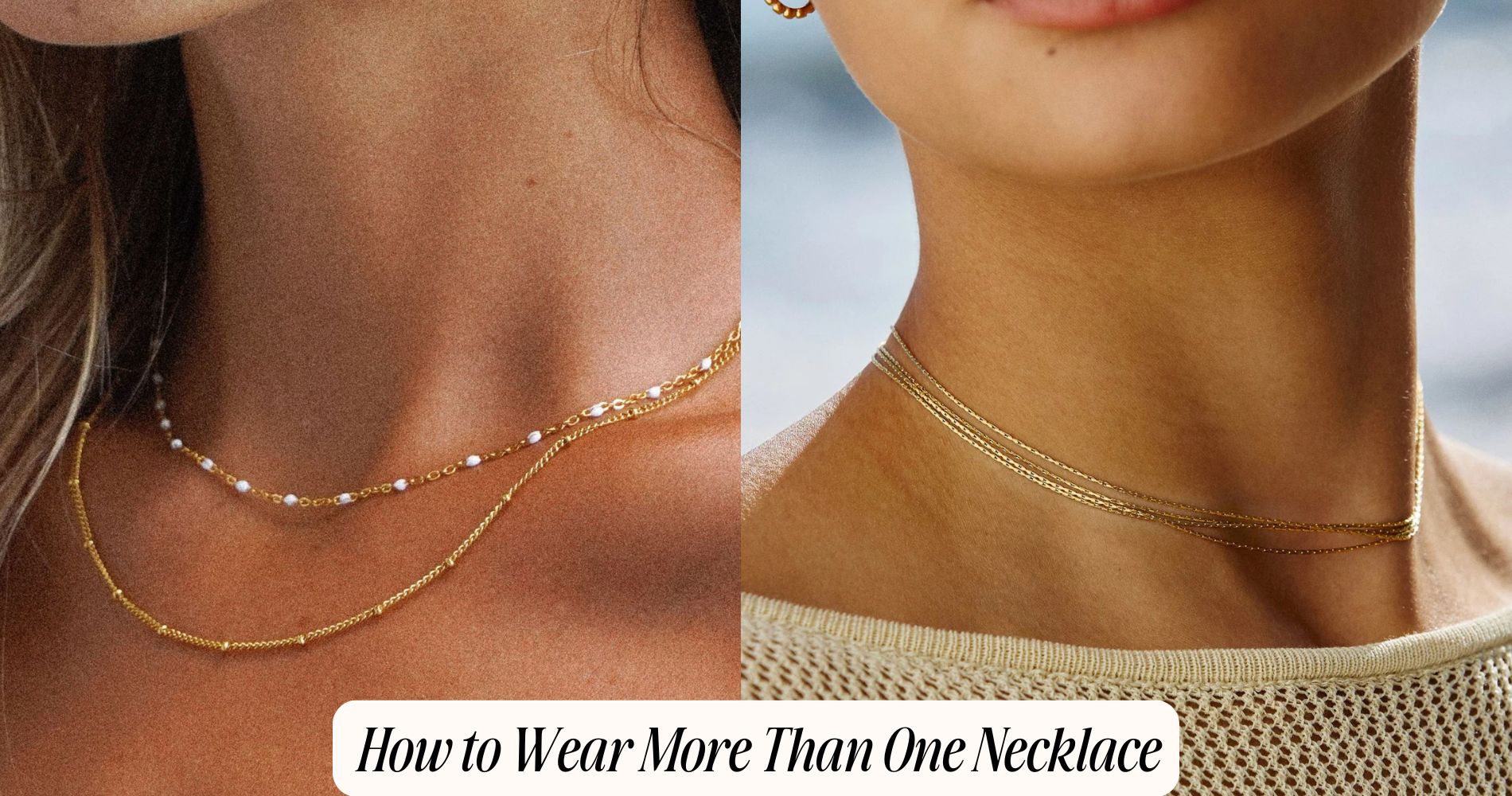




Leave a comment
This site is protected by hCaptcha and the hCaptcha Privacy Policy and Terms of Service apply.